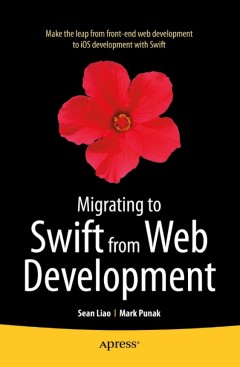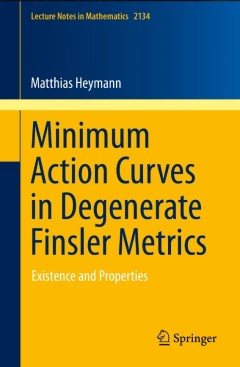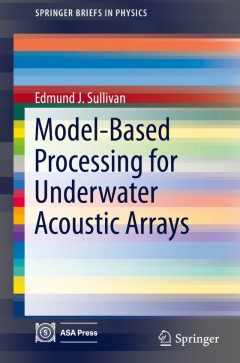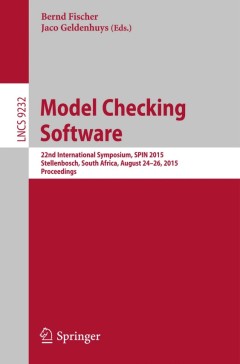Filter by

Migrating to Swift from Web Development
Migrating to Swift From Web Development gives you the ability to create native iOS apps using the latest Swift programming language. Starting with preparing your latest Xcode 6 Integrated Development Environment and introducing just enough iOS application framework fundamentals, you'll understand how to create a simple but meaningful Hello Swift application for iOS 8 immediately. After the sho…
- Edition
- 1
- ISBN/ISSN
- -
- Collation
- XIV, 260
- Series Title
- -
- Call Number
- -

Emergency Approaches to Neurosurgical Conditions
Patients with neurosurgical conditions are almost always referred from either primary care physicians, neurologists, internist or a specialist in family medicine. This comprehensive guide will answer commonly asked questions about common neurosurgical conditions related to brain and spinal cord, in an attempt to fill in the gap and answer numerous questions that arises after a diagnosis is made…
- Edition
- 1
- ISBN/ISSN
- 978-3-319-10693-9
- Collation
- 18 b/w illustrations, 36 illustrations in colour
- Series Title
- -
- Call Number
- -

Embedded Systems Design for High-Speed Data Acquisition and Control
This book serves as a practical guide for practicing engineers who need to design embedded systems for high-speed data acquisition and control systems. A minimum amount of theory is presented, along with a review of analog and digital electronics, followed by detailed explanations of essential topics in hardware design and software development. The discussion of hardware focuses on microcontrol…
- Edition
- 1
- ISBN/ISSN
- 978-3-319-06865-7
- Collation
- 118 b/w illustrations, 5 illustrations in colour
- Series Title
- -
- Call Number
- -

Embedded System Technology 13th National Conference, ESTC 2015, Beijing, Chi…
This book constitutes the refereed proceedings of the 13th National Conference on Embedded System Technology, ESTC 2015, held in Beijing, China, in October 2015. The 18 revised full papers presented were carefully reviewed and selected from 63 papers. The topics cover a broad range of fields focusing on research about embedded system technologies, such as smart hardware, system and network, …
- Edition
- 1
- ISBN/ISSN
- 978-981-10-0421-6
- Collation
- 94 illustrations in colour
- Series Title
- -
- Call Number
- -

Embedded Firmware Solutions Development Best Practices for the Internet of T…
Embedded Firmware Solutions is the perfect introduction and daily-use field guide--for the thousands of firmware designers, hardware engineers, architects, managers, and developers--to Intel’s new firmware direction (including Quark coverage), showing how to integrate Intel® Architecture designs into their plans. Featuring hands-on examples and exercises using Open Source codebases, like …
- Edition
- 1
- ISBN/ISSN
- 978-1-4842-0070-4
- Collation
- 68 b/w illustrations
- Series Title
- -
- Call Number
- -

Minimum Action Curves in Degenerate Finsler Metrics
Presenting a study of geometric action functionals (i.e., non-negative functionals on the space of unparameterized oriented rectifiable curves), this monograph focuses on the subclass of those functionals whose local action is a degenerate type of Finsler metric that may vanish in certain directions, allowing for curves with positive Euclidean length but with zero action. For such functionals, …
- Edition
- 1
- ISBN/ISSN
- 978-3-319-17752-6
- Collation
- XV, 186
- Series Title
- Lecture Notes in Mathematics
- Call Number
- -

Model-Based Processing for Underwater Acoustic Arrays
This monograph presents a unified approach to model-based processing for underwater acoustic arrays. The use of physical models in passive array processing is not a new idea, but it has been used on a case-by-case basis, and as such, lacks any unifying structure. This work views all such processing methods as estimation procedures, which then can be unified by treating them all as a form of joi…
- Edition
- 1
- ISBN/ISSN
- 978-3-319-17556-0
- Collation
- X, 113
- Series Title
- SpringerBriefs in Physics
- Call Number
- -

Migrating from Drupal to Backdrop
Migrate an existing Drupal 6 or 7 website to Backdrop and discover why you should consider using Backdrop when building a new website. You'll learn what Backdrop is, how to install and configure Backdrop, and create and manage content. Migrating from Drupal to Backdrop focuses on the user who is responsible for building, maintaining, and managing an organization's website and who is interested …
- Edition
- 1
- ISBN/ISSN
- 978-1-4842-1759-7
- Collation
- XIX, 89
- Series Title
- -
- Call Number
- -

Model Checking Software
This book constitutes the refereed proceedings of the 22nd International Symposium on Model Checking Software, SPIN 2015, held in Stellenbosch, South Africa, in August 2015. The 18 papers presented – 14 regular papers and 4 tool or new idea papers – were carefully reviewed and selected from 27 submissions. They cover the field between theoretical advances and practical considerations and ar…
- Edition
- 1
- ISBN/ISSN
- 978-3-319-23403-8
- Collation
- XVIII, 319
- Series Title
- Lecture Notes in Computer Science
- Call Number
- -

Electrophysiology of Unconventional Channels and Pores
This book is dedicated to the channels and pores that belong to an eclectic and ubiquitous class of unconventional - perhaps at times strange - pore-forming molecules, which nevertheless play fundamental roles in various organisms. These non-canonical channels may take on various and sometimes complex architectures, such as large beta-barrels or lipid-containing pores. They may originate from b…
- Edition
- 1
- ISBN/ISSN
- 978-3-319-20149-8
- Collation
- XI, 385
- Series Title
- -
- Call Number
- -
 Computer Science, Information & General Works
Computer Science, Information & General Works  Philosophy & Psychology
Philosophy & Psychology  Religion
Religion  Social Sciences
Social Sciences  Language
Language  Pure Science
Pure Science  Applied Sciences
Applied Sciences  Art & Recreation
Art & Recreation  Literature
Literature  History & Geography
History & Geography